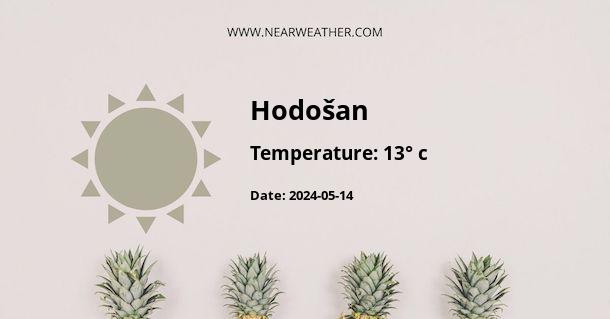Introduction to Hodosan's Climate and Weather Patterns
Nestled within the picturesque landscapes of the Kanto region, Hodosan is an area that experiences a variety of weather conditions due to its geographical setting and topographical features. Understanding the climate nuances of Hodosan is essential for both residents and visitors, as it creates a framework for engaging in agricultural activities, tourism, outdoor recreation, and local event planning. In the following sections, we will delve into the intricate details of Hodosan's climate, providing a comprehensive overview of its weather year-round.
Geographical Influence on Hodosan's Climate
The climate in Hodosan is largely influenced by its geographical location in Japan. Being part of the broader Hodosan range, the area experiences a humid subtropical climate with distinct seasonal changes, which is typical of the region. Its proximity to the Pacific Ocean and its altitude work in conjunction to produce a weather pattern characterized by warm, humid summers and cold, relatively dry winters.
Seasonal Weather Overview
Spring
Spring in Hodosan is marked by gradually warming temperatures and an increase in precipitation. Cherry blossoms, a celebrated indicator of spring's arrival in Japan, adorn the landscape, attracting both local and international tourists. The following table summarizes the average temperatures and precipitation patterns of Hodosan during the spring months:
| Month | Average High Temperature (°C) | Average Low Temperature (°C) | Average Precipitation (mm) |
|---|---|---|---|
| March | 13 | 5 | 115 |
| April | 18 | 10 | 125 |
| May | 23 | 15 | 137 |
Summer
Summer witnesses Hodosan embrace a hot and humid climate, with temperatures that can occasionally peak into the high 30s (°C). The area enters its rainy season in early summer, known as tsuyu, leading to increased moisture and occasionally heavy rainfall. Punctuating the summer season are occasional typhoons, which can bring intense weather conditions.
"Hodosan summer can be quite taxing due to the high humidity and temperature, which is why many local festivals and events are centered around evening hours to avoid the extreme heat of the day." - Expert climatologist
Fall
Fall is a transitional period bringing a respite from the summer heat. Comfortable temperatures and lower humidity levels make this season ideal for outdoor activities. The region is graced with stunning autumn foliage, creating a vibrant tapestry of colors. Average weather statistics for the fall months are as follows:
- September: The temperature starts cooling down, with an average high of 25°C and an average low of 18°C, accompanied by a significant reduction in humidity levels.
- October: This month sees further cooling, with average highs around 20°C and lows around 12°C, and relatively little rainfall.
- November: In late fall, temperatures may drop to an average high of 14°C and a low of 6°C, and the weather becomes considerably drier.
Winter
Winter in Hodosan is relatively dry and cold, with occasional snowfall, which can cover the region in a delicate layer of snow, adding to the area's aesthetic appeal. The temperatures typically range from cool to cold, with January being the coldest month. Here are some winter weather specifics:
| Month | Average High Temperature (°C) | Average Low Temperature (°C) | Average Snowfall (cm) |
|---|---|---|---|
| December | 9 | 1 | 5 |
| January | 6 | -2 | 12 |
| February | 7 | -1 | 9 |
Annual Weather Averages and Trends
To give a broad overview of the yearly weather conditions in Hodosan, we need to consider both the long-term temperature and precipitation trends. On average, the region experiences a mean annual temperature around 14°C to 15°C with annual rainfall averaging approximately 1400mm. It is important to note that these figures may exhibit slight variations due to broader climate change patterns.
"Year-over-year, we have observed subtle shifts in the timing and intensity of each season, which can likely be attributed to the global phenomenon of climate change. These shifts necessitate continuous monitoring and adaptive planning for the region's agricultural and tourism sectors." - Local meteorological research specialist
Understanding Weather-Related Risks in Hodosan
Seasonal weather events, such as typhoons in summer and early fall, along with snowfall in winter, present certain risks that residents and visitors should be prepared for. Infrastructure and local services are generally well-equipped to manage these events, but disruption to transportation and outdoor activities can occur. Data-driven forecasting and early warning systems play a critical role in mitigating the impacts of severe weather events in the Hodosan area.
Monthly Weather Highlights and Tips
- March: Variable weather; prepare for a mix of mild days and sudden cold snaps. Great time for viewing cherry blossoms.
- August: Peak of summer heat; ideal for enjoying evening cultural festivals, but be mindful of high UV levels during the day.
- November: Pleasantly cool weather perfect for hiking and experiencing the autumn foliage.
- January: The coldest month of the year; ensure adequate winter clothing and prepare for potential snow-related activities.
Conclusion
The climate and weather in Hodosan are integral to its regional charm and appeal. Understanding these patterns is crucial for planning activities, whether it's for agricultural pursuits or simply enjoying the natural beauty and cultural events throughout the year. With this detailed guide, one can fully appreciate the exceptional weather dynamics that shape life around the majestic Mount Hodosan.
A - Hodošan's Latitude is 46.395279 & Longitude is 16.643890.
A - Weather in Hodošan is 3° today.
A - Climate Conditions in Hodošan shows light rain today.
A - Humidity in Hodošan is 31% today.
A - Wind speed in Hodošan is 34.6 km/h, flowing at 13° wind direction. today.
